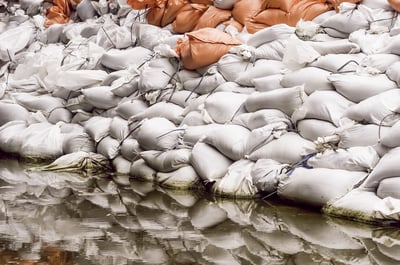Imagine this scenario: You are a property owner. You get a call from your tenant letting you know that they have water all over the place. Do you know if your property insurance policy provides coverage?

Water is one of the most common ways that property is damaged. However, if, and how, a water claim is covered is often a source of confusion.
Most commercial property policies have an exclusion for water damage. Flood, mudslide, water back up from a drain or sump, and underground water pressure or seepage are excluded on most commercial property policies. 1 This broad exclusion effectively eliminates water itself from being a covered loss. Important to note, however, is that water damage resulting from a covered cause of loss will typically be covered. For example, a fire damages the roof of a building and the attic is filled with water; water damage from a sprinkler system after a fire; or a pipe suddenly bursting are situations in which your property policy may respond to a water loss.
How can you fill in some of the gaps?
There are two types of coverage designed to fill the water gaps: Water Back-Up & Sump Overflow, and Flood.
The Water Back-Up and Sump Overflow coverage is intended to provide coverage limited to the back up of water through drains, sewers, and sumps in basements. This coverage is usually limited to a smaller dollar amount rather than full policy limits, and does not address every exposure of water entering a basement. This is important coverage to include in situations where there is equipment or inventory in a basement that can be easily damaged by water.
Flood coverage can be purchased to provide broader coverage in the event of water damage. Flood coverage is available through the National Flood Insurance Program (if the property is located in a flood zone), or through standard property insurance markets. A standard definition of flood is as follows:
“The following is added to the covered causes of loss:
Flood, meaning a general and temporary condition of partial or complete inundation of normally dry land areas due to:
1. The overflow of inland or tidal waters
2. The unusual or rapid accumulation of runoff of surface waters from any source;
or
3. Mudslides or mudflows which are caused by flooding as defined in (2) above. For the purpose of this covered cause of loss, a mudslide or mudflow involves a river of liquid and flowing mud on the surface of normally dry land areas as when earth is carried by a current of water and deposited along the path of the current.”2
To qualify as a flood event, notice that normally dry areas must be affected. However, the definition is fairly broad beyond that. With the addition of flood and water back-up coverages, most of the water exclusion can be built back into your property policy. However, be mindful of some remaining gaps such as underground pressure, and seepage from sources other than drains, sewers, and sumps.
Contact your Real Estate & Hospitality group experts at Hausmann-Johnson to discuss your property’s water exposure.
1Insurance Services Office form CP 10 30 06/07 “Causes of Loss: Special Form”
2Insurance Services Office form CP 10 65 06/07 “Flood Coverage Endorsement”

COMMENTS